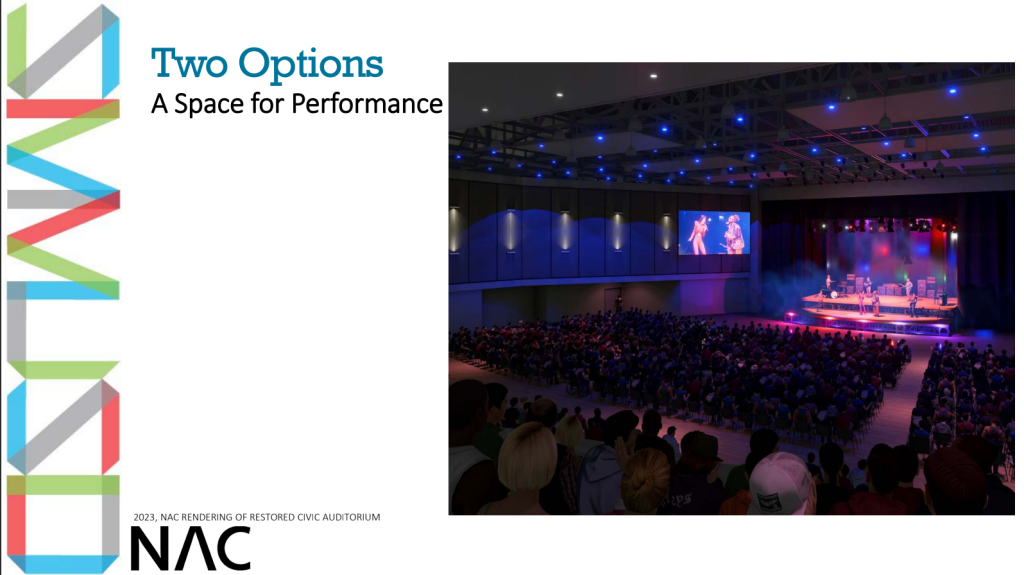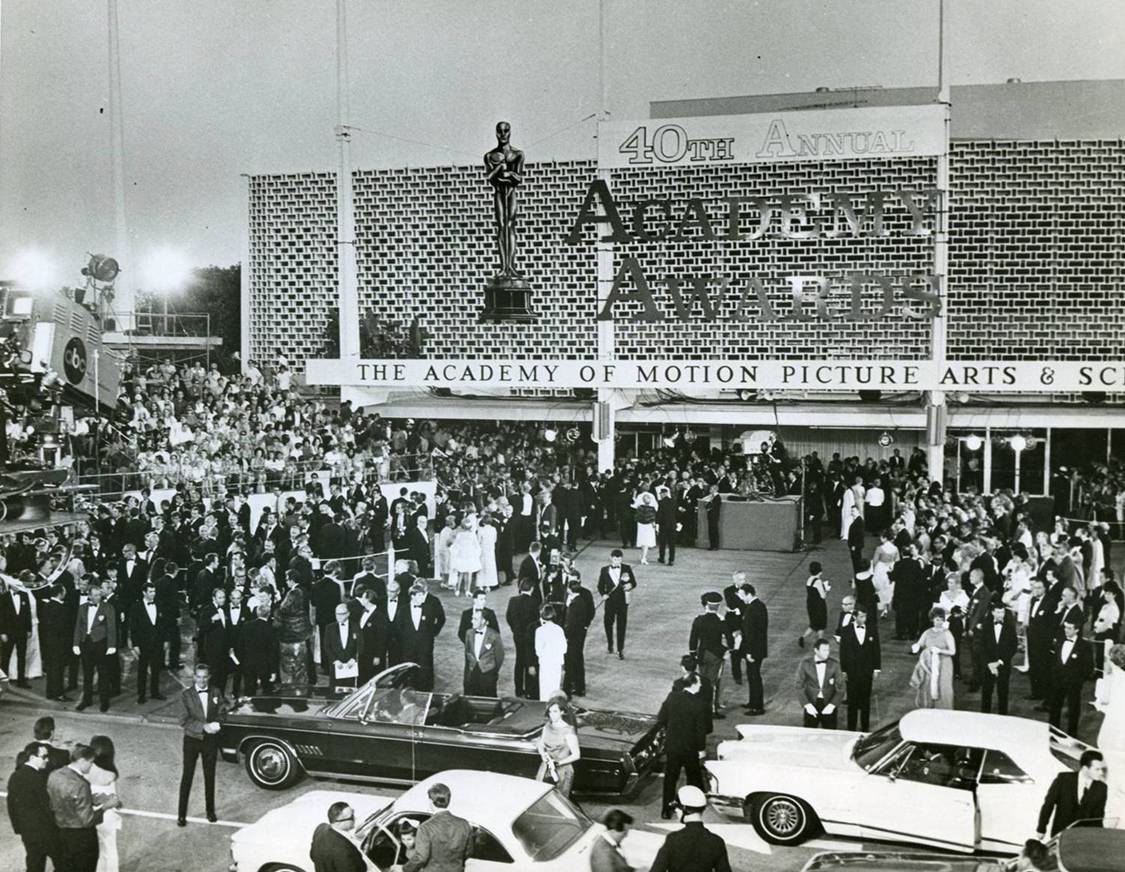Much of this story is coverage from last week’s OPA meeting. You can watch the meeting on YouTube or read their recap of the meeting in last week’s end-of-the-week newsletter.
Almost three weeks ago, the process for the rehabilitation and reopening of the Civic Auditorium was thrown into chaos when the Santa Monica-Malibu Unified School District (SMMUSD) pulled its bid to purchase the land under the state’s Surplus Land Act. The news was made even more chaotic when the advocacy group Save the Civic announced the district had abandoned its plans altogether, a claim repeated several times in other news outlets.
At last week’s meeting of the Ocean Park Association, some clarity was provided as the neighborhood group hosted representatives of three groups that claim to have plans for the Civic Auditorium: Santa Monica-Malibu Unified School District (SMMUSD), the non-profit affordable housing developer Community Corporation of Santa Monica (CCSM), and Save the Civic.
It is estimated that the total cost of purchasing the land from the city, going through a public process and entitlement process for design, and construction would add up to at least $225 million dollars.
Before we get into what was learned and clarified at the OPA meeting last week, a brief recap of what got us to where we are now.
In 2013, the Santa Monica Civic Auditorium closed because the building could not meet building codes regarding earthquake safety. For a decade, the building has sat unused. State law requires that cities with unused publicly owned land go through a public process where non-profits and other government agencies can submit bids to use that land for the “public benefit” before it can open the land up for a larger “Request for Proposals,” which could include for-profit uses. The City of Santa Monica opened is currently still in this process, although with no bids on the table the city will be asking the state to declare that process completed. If the state agrees, then the city can field new requests, put out its own vision and make a “Request for Proposals” or continue to let the land sit unused.
The bids:
The City did receive two bids earlier this year as part of the Surplus Land Act process.
The first, from CCSM, included creating 165 units of affordable housing on the Civic property and re-opening the Civic for meetings, concerts, and other events as it had in the past that included political rallies and even the Oscars.
The deal included a $20 million purchase of the land and existing structures from the City. The funding for construction and retrofitting would come from tax credits and a mix of public and private funding. This proposal was rejected outright by the city because the City Council believes they can get more money from another proposal.
The other bid was from SMMUSD, which included many more details for how the space would be used and how it could be funded. The building would be used for athletic competitions and practices after an extensive reconstruction but would be open for rentals the other “100 to 110 days” of the year. The cost of construction and the purchase of the land would be funded by a school bond that would need to be passed by voters. Building operations would be paid for by the rental fees. This proposal was pulled by SMMUSD, although they vow to bring it back after the state allows the city to begin a new public process.
“We are at a place where we can pause,” said Carey Upton, the Chief Operations Officer for SMMUSD. “We will step back. We will not make a formal proposal at this time. If there is a better idea, now is the time.”
The other group that presented to OPA on Wednesday, Save the Civic, offered nothing in terms of specifics either about plans or the groups they believe might buy and purchase the property. They offered sharp critiques of the other proposals’ timelines and community benefits, and lots of nostalgia for a Civic Auditorium that hosted everyone from Bob Marley to the Dali Lama.
The group claims they are in contact with a team that will restore the Civic to be a “world class performing arts center” but they can’t tell us anything about the team other than it includes a construction company and a concert event programmer. More details could be forthcoming if the city is removed from the requirements of the Surplus Land Act.
“The timeline really depends on when the state says, ’Santa Monica you are free from the SLA process,’” said Lori Nafshun of Save the Civic, commenting on when they can release details of their allies’ proposal.
Even though there are no proposals on the table anymore, finalizing State approval of compliance with the Surplus Land Act could take months even if everything goes smoothly.

Timing Going Forward:
“It takes them a long time to get back to us on some things,” said City Manager David White of the state Department of Housing and Community Development who needs to approve the city’s request to end the Surplus Land Act Process. “(We) don’t know exactly how long it will take, but it will be at least three months or so…Maybe longer.”
White explained that once the Surplus Land Act is satisfied, city staff will seek direction from the Council on a “Request for Proposals” process. The city can also receive unsolicited proposals outside of the Surplus Land Act requirements if it is freed from its restrictions. This is all assuming that the state does indeed say the city is in compliance with the state law and doesn’t have questions about the rejection of CCSM’s plan.
SMMUSD is publicly demonstrating a tremendous show of patience, but they also warned that because of the election schedule a City delay of more than nine months could lead to at least a two-year delay in the District’s proposal, which currently anticipates re-opening the Civic in 2029 or 2030.
Both CCSM and Save the Civic either stated or implied their proposal could lead to a re-opened Civic faster than SMMUSD. CCSM is able to start the purchasing process now and Save the Civic claiming the mysterious team would also have access to cash faster than SMMUSD can complete the bond process. Save the Civic went so far as to predict the building could be opened in time to support events during the 2028 Olympics.
SMMUSD is at a disadvantage in any of these public discussions as they have unveiled a tremendously detailed proposal that can be critiqued while other proposals aren’t completely ready yet. CCSM has announced a less-detailed proposal but notes they weren’t asked for more details before the city rejected their plan outright. Save the Civic offers nothing but nostalgia and promises that there is a really great plan that they can’t tell anyone about.
Sometimes frustration shows through SMMUSD’s otherwise calm facade. “Good luck making the Olympics,” the School District’s Upton offered at the end of the night. He noted that the process would take two to three years in the entitlement process and at least another two for construction. In other words, if Save the Civic’s allies were able to put forward a bid today, purchase the land immediately, and experience no unforeseen setbacks; the Civic would still not be ready to open by the Olympics.

The Civic as a Landmark
The Civic is one of one hundred and ten historic landmarks within the city’s borders. This limits what kind of construction can be done on the civic property. There is some question as to whether or not this applies to a bid by SMMUSD since it is a public entity, but it would definitely apply to any private proposal such as the one by the group aligned with Save the Civic.
White confirmed on behalf of the city that the matter is not clear, but that SMMUSD may be able to ignore the landmark designation in their designs for the Civic. White and Upton both agreed that compliance with the designation could be negotiated as part of the sale agreement.
Closing thoughts
Throughout the evening, when CCSM’s proposal did come up, it was usually by someone in the audience arguing that the proposal was flawed because it would “replace the civic with affordable housing.” A statement by Jerry Peace Activist Rubin was even built around this presumption.
CCSM’s Jesus Hernandez gave a brief presentation of its rejected proposal earlier in the evening and was mostly quiet the rest of the evening. However, he used his time at the end to remind the audience that CCSM’s proposal was to build housing and reopen the Civic. A private partner would handle the rehabilitation and management of the Civic, in part because of the money they could raise by working with CCSM.
During his time, Upton reiterated that SMMUSD is not pulling out of the bidding process entirely, but waiting to see if better options are presented for the City. “The district is excited to hear about other plans…but if that doesn’t happen we have a plan we are ready to go forward with,” he said.
Save the Civic also ended the evening with promises that a great plan is right around the corner. As was true for most of the night, the details of what they can deliver remain to be seen.
